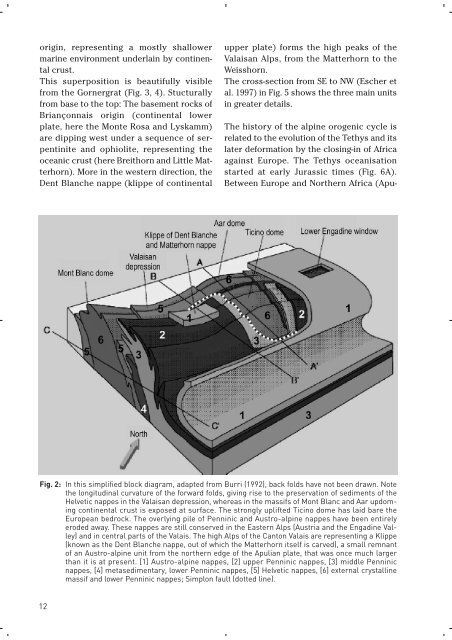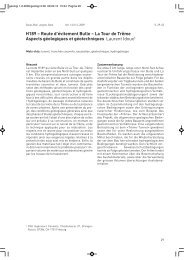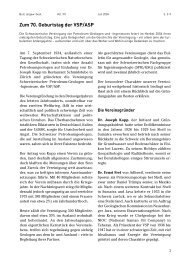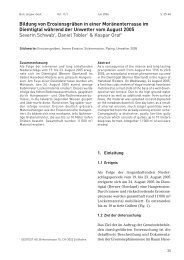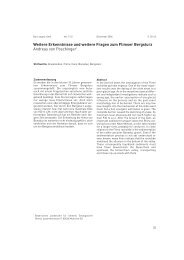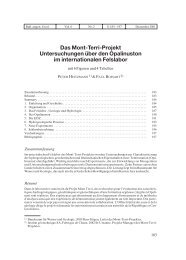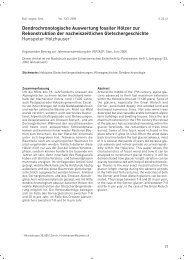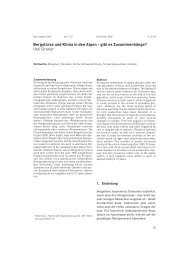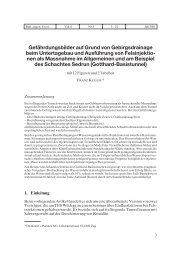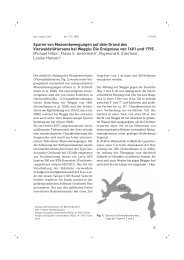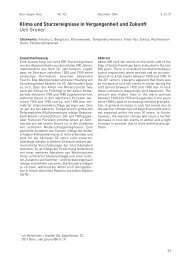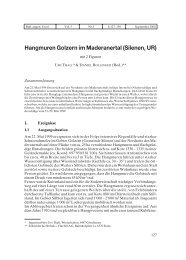The African Matterhorn: yes or no?
The African Matterhorn: yes or no?
The African Matterhorn: yes or no?
Create successful ePaper yourself
Turn your PDF publications into a flip-book with our unique Google optimized e-Paper software.
<strong>or</strong>igin, representing a mostly shallower<br />
marine environment underlain by continental<br />
crust.<br />
This superposition is beautifully visible<br />
from the G<strong>or</strong>nergrat (Fig. 3, 4). Stucturally<br />
from base to the top: <strong>The</strong> basement rocks of<br />
Briançonnais <strong>or</strong>igin (continental lower<br />
plate, here the Monte Rosa and Lyskamm)<br />
are dipping west under a sequence of serpentinite<br />
and ophiolite, representing the<br />
oceanic crust (here Breith<strong>or</strong>n and Little <strong>Matterh<strong>or</strong>n</strong>).<br />
M<strong>or</strong>e in the western direction, the<br />
Dent Blanche nappe (klippe of continental<br />
upper plate) f<strong>or</strong>ms the high peaks of the<br />
Valaisan Alps, from the <strong>Matterh<strong>or</strong>n</strong> to the<br />
Weissh<strong>or</strong>n.<br />
<strong>The</strong> cross-section from SE to NW (Escher et<br />
al. 1997) in Fig. 5 shows the three main units<br />
in greater details.<br />
<strong>The</strong> hist<strong>or</strong>y of the alpine <strong>or</strong>ogenic cycle is<br />
related to the evolution of the Tethys and its<br />
later def<strong>or</strong>mation by the closing-in of Africa<br />
against Europe. <strong>The</strong> Tethys oceanisation<br />
started at early Jurassic times (Fig. 6A).<br />
Between Europe and N<strong>or</strong>thern Africa (Apu-<br />
Fig. 2: In this simplified block diagram, adapted from Burri (1992), back folds have <strong>no</strong>t been drawn. Note<br />
the longitudinal curvature of the f<strong>or</strong>ward folds, giving rise to the preservation of sediments of the<br />
Helvetic nappes in the Valaisan depression, whereas in the massifs of Mont Blanc and Aar updoming<br />
continental crust is exposed at surface. <strong>The</strong> strongly uplifted Tici<strong>no</strong> dome has laid bare the<br />
European bedrock. <strong>The</strong> overlying pile of Penninic and Austro-alpine nappes have been entirely<br />
eroded away. <strong>The</strong>se nappes are still conserved in the Eastern Alps (Austria and the Engadine Valley)<br />
and in central parts of the Valais. <strong>The</strong> high Alps of the Canton Valais are representing a Klippe<br />
(k<strong>no</strong>wn as the Dent Blanche nappe, out of which the <strong>Matterh<strong>or</strong>n</strong> itself is carved), a small remnant<br />
of an Austro-alpine unit from the n<strong>or</strong>thern edge of the Apulian plate, that was once much larger<br />
than it is at present. [1] Austro-alpine nappes, [2] upper Penninic nappes, [3] middle Penninic<br />
nappes, [4] metasedimentary, lower Penninic nappes, [5] Helvetic nappes, [6] external crystalline<br />
massif and lower Penninic nappes; Simplon fault (dotted line).<br />
12


